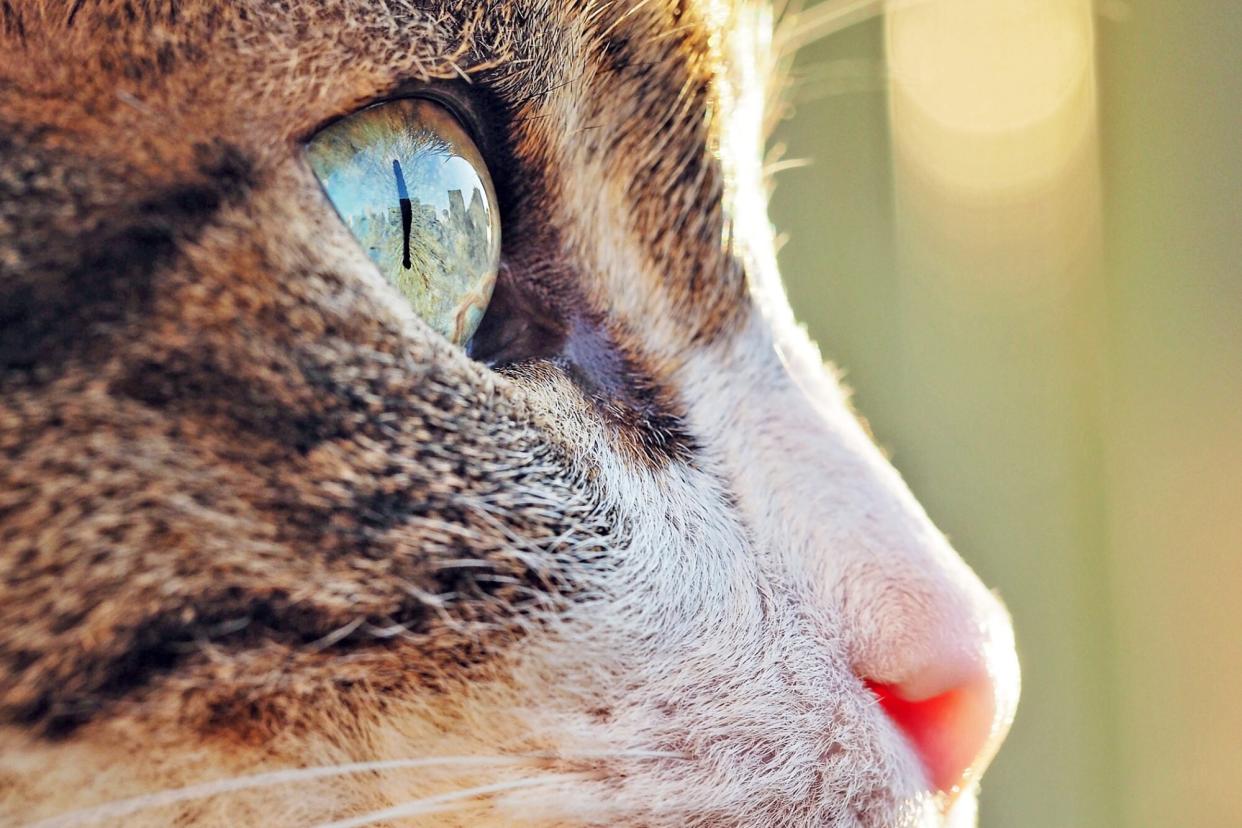Why Do Cats' Pupils Change?

Luca Romano / EyeEm / Getty
Cat behavior is not as easy to decipher as dog behavior. While a dog may wag their tail, a telltale sign of excitement (usually), cats conceal their emotions and often wear a "poker face." According to Molly DeVoss, Certified Feline Training and Behavior Specialist for Cat Behavior Solutions in Dallas, this is completely normal and in their nature.
"Cats have evolved as a solitary species. In the wild, they live alone, not with other cats, so they have little need for communication," says DeVoss. There are, however, a few ways to translate how your cat is feeling through subtle body language cues. For one, why do cats' pupils change?
RELATED: Why Do Cats' Eyes Glow in the Dark?
What Are a Cat's Pupils Trying to Tell You?
Have you ever noticed that your kitty's eyes look different based on the situation they're in? "Pupils constrict and widen not just in response to light but also to emotion," says Leslie Sinn, DVM, a board-certified veterinary behaviorist and member of the Daily Paws Advisory Board. "There are muscles that surround the pupils that either dilate or constrict based on emotional feedback."
In a stressful situation, your cat's sympathetic nervous system causes their pupils to dilate. Think of this as their "fight or flight" response, says Sinn. In contrast, their parasympathetic nervous system allows them to relax, or "rest and digest," and the pupils will constrict.
Small or Slit Pupils
Remember that pupils can change not only based on emotion but because of light. When the eye (feline or human) is exposed to bright light, the pupil will shrink in an effort to protect the eye and keep light out. In other cases, a small or slit pupil might simply mean that your cat is relaxed.
Large, Dilated Pupils
Conversely, pupils get larger in the dark to allow more light in—hopefully allowing the viewer to see better when light isn't present. Kitty pupils dilate in low-light situations to improve their vision—in fact, cat eyes are designed to dilate into full circles, giving cats excellent night vision. If their pupils appear dilated even in bright light, Sinn says this could convey stress, fear, or concern.
Almond-Shaped Pupils
When your cat has almond-shaped pupils, this usually means they're at ease. "They're neither worried nor relaxed but aware of their surroundings," says Sinn.
When a Vet Visit is Necessary
Pupils can change hundreds of times in one day, so varying pupil size and shape isn't something to worry about. "Cloudiness in the eye, discoloration of the eye or iris, any kind of swelling, excessive blinking, eye discharge, or your cat rubbing or digging at its eye" could be signs of an eye problem, such as anisocoria, says Sinn.
According to VCA Animal Hospitals, anisocoria is a condition in which the pupils of the cat's eyes are different sizes; in other words, one pupil is larger than the other.
"Since both pupils should be receiving the same input and information, they should be identical," says Sinn. "If they are not, then there is a blockage or impediment either in the nerve pathways feeding information to the eye, or a physical problem with the structures of the eyes that make it unable to respond to nerve input. It is considered a significant and serious sign of an underlying medical problem."
If you notice any of the symptoms mentioned, contact your veterinarian right away.
RELATED: 6 Common Eye Problems in Cats

